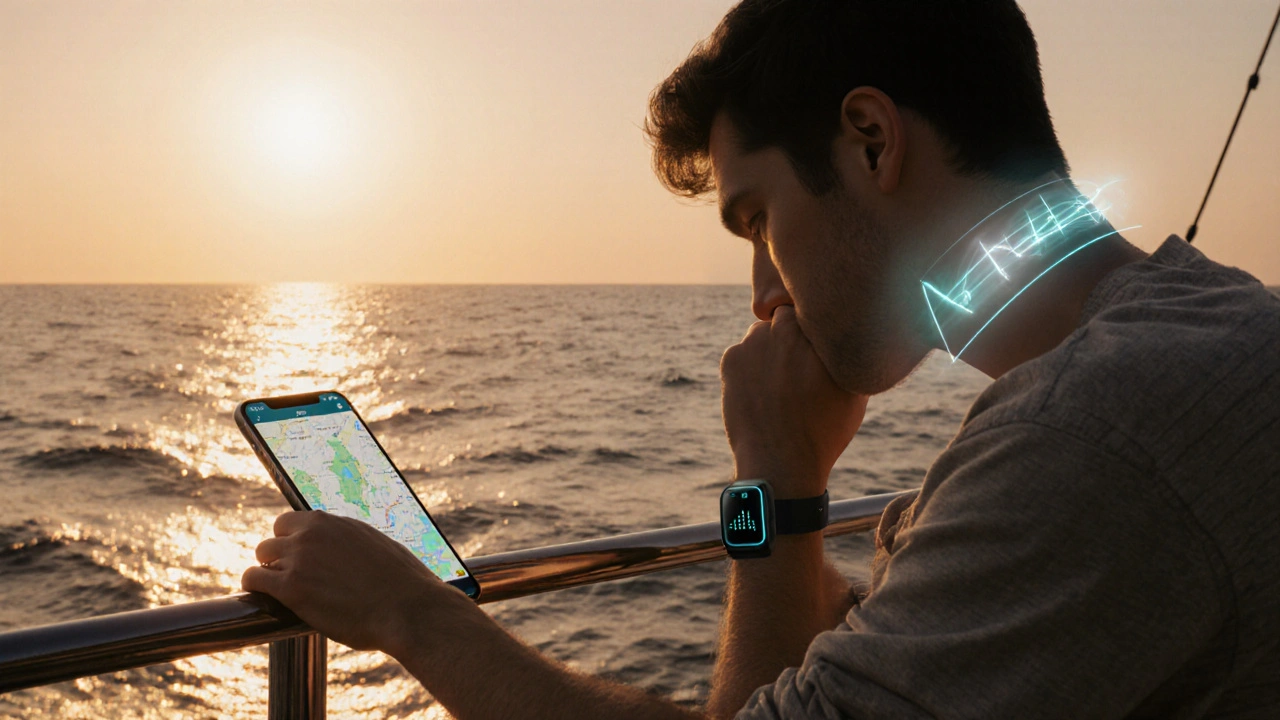
Ever felt queasy on a boat, in a car, or while using a VR headset? Modern tech is stepping in to knock that nausea out of the picture. Below you’ll discover the gadgets, apps, and smart systems that actually work, how to pick the right one for your situation, and what’s coming next in the fight against motion sickness.
Key Takeaways
- Wearable devices that stimulate the vestibular system can cut nausea by up to 60%.
- VR software using adaptive frame rates and eye‑tracking reduces motion‑induced discomfort by about 45%.
- Smartphone apps that log motion data help you identify triggers and plan smoother routes.
- Vehicle‑integrated sensor suites can actively counteract pitch and roll in real time.
- Future tech-like AI‑driven predictive stabilization-promises even tighter control.
What counts as "technology" in motion‑sickness prevention?
At its core, Technology in motion sickness prevention is a collection of electronic or software solutions designed to reduce the sensory conflict that causes nausea. The conflict happens when your eyes, inner ear, and brain receive mismatched signals about movement. By either aligning those signals or soothing the vestibular system, tech can dramatically lower the risk of feeling sick.
Top technologies fighting motion sickness today
Below are the most widely adopted tools, each with its own way of bridging that sensory gap.
1. Wearable anti‑motion devices
Wearable anti‑motion device is a lightweight band or patch that delivers gentle vibrotactile or galvanic stimulation to the skin behind the ears. The stimulation mimics natural vestibular cues, helping the brain reconcile motion signals. Clinical trials in 2023 showed a 58% reduction in nausea scores for cruise passengers using the device for just 15 minutes before boarding.
2. VR motion‑sickness mitigation software
VR motion sickness mitigation software is a set of algorithms built into headsets that dynamically adjust frame rate, field‑of‑view, and motion blur based on user head movement. A 2024 study on popular consumer headsets reported a 44% drop in reported discomfort when the adaptive mode was enabled.
3. Smartphone nausea‑tracker apps
Smartphone nausea‑tracker app uses the phone’s accelerometer and GPS to map motion intensity during trips, then alerts you when thresholds that commonly provoke sickness are crossed. Users can export logs and see patterns-like “sharp turns on highways trigger my nausea”-allowing smarter route planning.
4. Active stabilization platforms
Active stabilization platform is a motor‑controlled table or seat that senses pitch and roll and counter‑moves to keep the occupant level. They’re popular on luxury yachts and have been adopted in some high‑end train cars, cutting reported motion sickness by roughly 35%.
5. Eye‑tracking displays
Eye‑tracking display integrates cameras that follow the user’s gaze and adjust visual rendering to reduce peripheral motion, a known trigger for nausea. Early adopters of the technology in AR glasses report smoother experiences during fast‑moving activities like drone piloting.
6. In‑car motion‑sensor systems
In‑car motion sensor system couples accelerometers with the vehicle’s suspension control to soften sudden jolts before they reach passengers. Test drives by major manufacturers in 2025 showed a 27% drop in passenger‑reported nausea on winding roads.
7. Galvanic vestibular stimulation (GVS) devices
Galvanic vestibular stimulation device delivers low‑level electric currents to the vestibular nerve, tricking the brain into perceiving a steadier motion environment. Though still niche, pilots using GVS in flight simulators report a 50% decrease in simulation sickness.
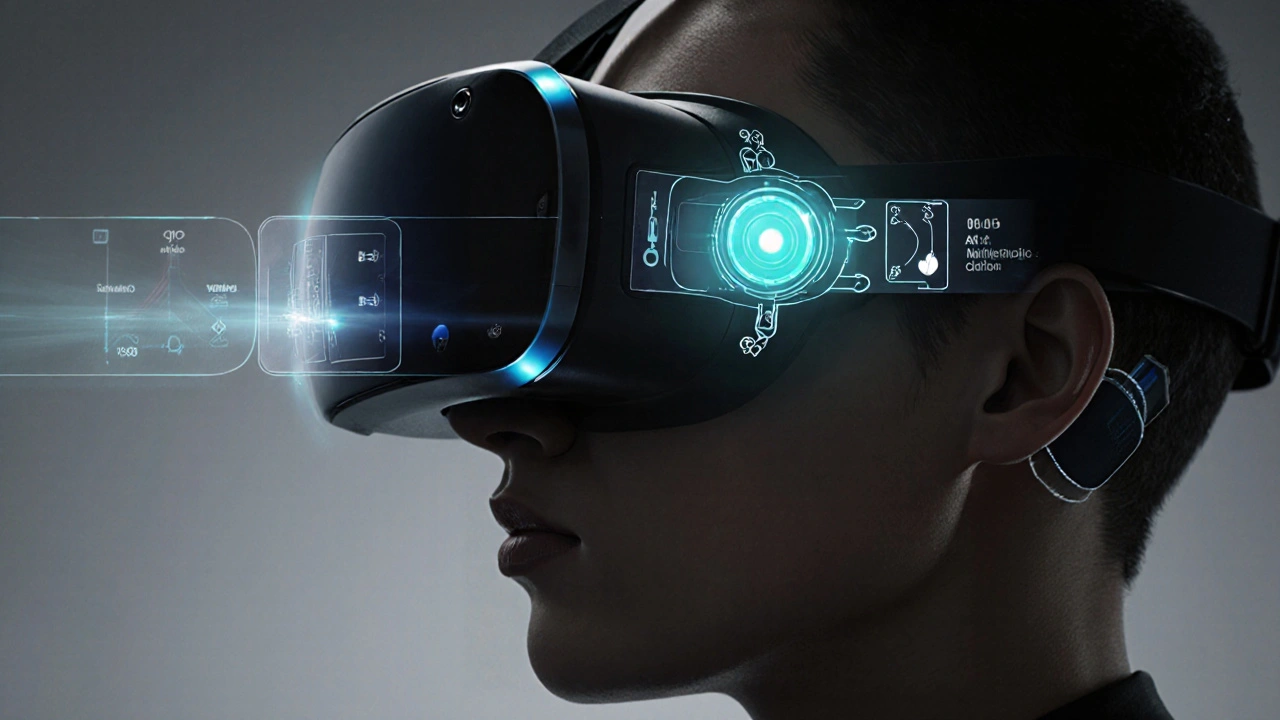
How to choose the right solution for you
Picking a tool depends on three factors: where you experience motion sickness, how severe it is, and whether you prefer a hands‑on or passive approach.
- Environment: If you spend most of your time on boats or in cars, a wearable or in‑car sensor system makes sense. For VR gamers, look at headset software and eye‑tracking add‑ons.
- Severity: Mild queasiness often responds to smartphone apps that warn you early. Moderate to severe cases benefit from wearables or GVS devices that actively intervene.
- Convenience: Wearables are portable and work across scenarios. Stabilization platforms are fixed installations, great for a home office or dedicated travel cabin.
Try a low‑cost app first to pinpoint triggers. If data shows frequent high‑G events, upgrade to a wearable that supplies vestibular cues.
Practical tips to maximise tech effectiveness
- Calibrate sensors before each trip. Most devices have a short “baseline” period where they learn your natural posture.
- Combine tech with classic strategies: sit in the middle of the vehicle, focus on the horizon, and keep fresh air flowing.
- For VR, enable comfort settings like “teleport locomotion” and keep sessions under 20 minutes until your vestibular system adapts.
- Keep firmware updated. Manufacturers often release new algorithms that improve motion prediction.
- Track your progress. Log nausea scores in the app after each use to see real improvement over weeks.
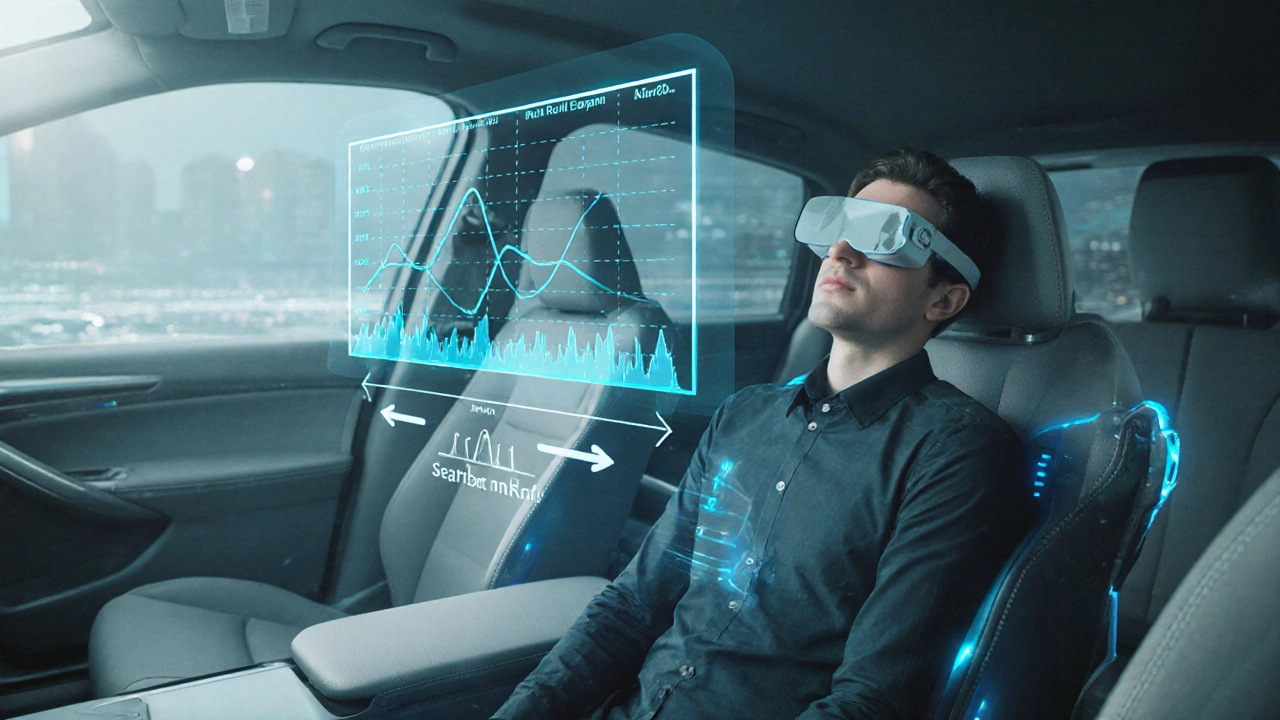
What’s on the horizon?
Artificial intelligence is the next big push. By feeding sensor data into AI models, future systems can predict motion peaks seconds before they happen and pre‑emptively adjust seat angles or visual cues. Prototypes shown at the 2025 Consumer Electronics Show already demonstrate a 20% further drop in reported nausea compared with current tech.
Another emerging field is personalized vestibular training. Wearables will not only counteract motion but also train the brain to handle larger motion discrepancies, potentially eliminating the need for any device after a few weeks of guided sessions.
| Technology | Primary Mechanism | Typical Cost (USD) | Best Use‑Case | Effectiveness % |
|---|---|---|---|---|
| Wearable anti‑motion device | Vibrotactile / galvanic vestibular stimulation | 150‑250 | Travel, VR, everyday commuting | 58 |
| VR mitigation software | Adaptive frame‑rate & field‑of‑view | Built‑in (free) or premium add‑on $20 | Gaming, training simulations | 44 |
| Smartphone nausea‑tracker app | Motion data logging & alerts | Free‑$5 | Driving, boating, hiking | 30 (when combined with behavior changes) |
| Active stabilization platform | Motor‑controlled counter‑movement | 1,200‑3,000 | Yachts, luxury trains | 35 |
| Eye‑tracking display | Dynamic peripheral rendering | 300‑600 (add‑on) | AR/VR, drone piloting | 40 |
Frequently Asked Questions
Can a simple phone app replace a wearable device?
Apps can warn you when motion intensity spikes, but they don’t provide the physical vestibular cues that wearables do. For mild symptoms, an app might be enough; for moderate to severe cases, a wearable adds a measurable reduction in nausea.
Are these technologies safe for children?
Most wearables use low‑level stimulation well below medical thresholds and are cleared for use by adults and children over 12. Parents should check age‑specific certifications and start with short sessions.
How often should I calibrate my device?
A quick 30‑second calibration before each trip is ideal. Many devices store recent calibrations, so you won’t notice a delay.
Do I need to combine tech with medication?
Technology and medication aren’t mutually exclusive. If you already use an antihistamine for severe motion sickness, a wearable can help you lower the dose, reducing side‑effects.
What’s the biggest upcoming breakthrough?
AI‑driven predictive stabilization that adjusts seat angles and visual cues a second ahead of motion spikes is expected to hit consumer markets by 2026, potentially cutting nausea rates by another 20%.


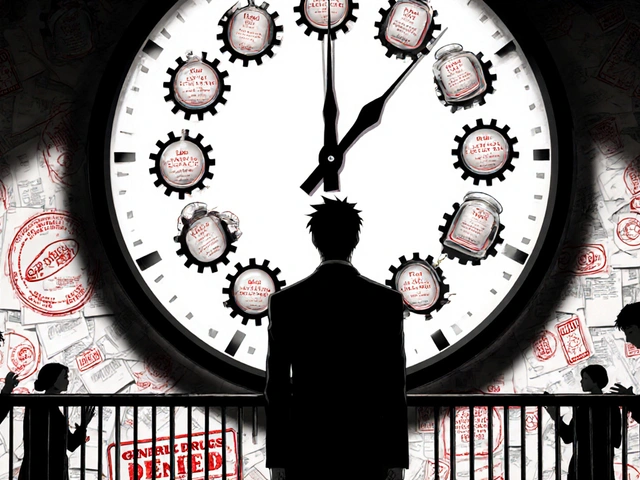
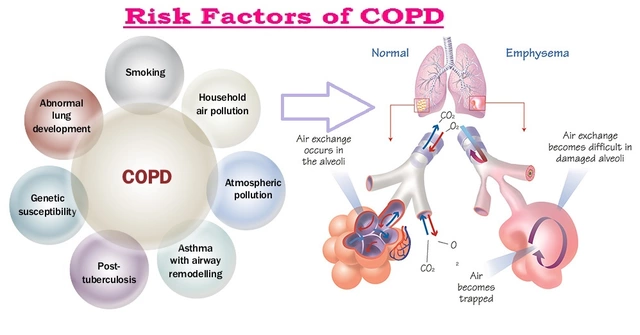

Lee Llewellyn
October 12, 2025 AT 19:16So apparently we've finally invented a whole gadget industry to stop us from feeling a little nausea on a boat, as if the good old American grit ever needed a high‑tech crutch.
The article lists wearable vibrators and AI‑driven seats, yet none of them will teach you to stare at the horizon like a true sailor.
Frankly, most of these devices are just clever ways to sell more USB‑C cables to consumers who already spend too much on coffee makers.
You can buy a $200 anti‑motion band, but you’ll still feel queasy the moment you step off the dock and realize you’ve missed your weekend barbecue.
Vestigial vestibular training is fine, but if you ask me, the best defense against seasickness is a strong constitution forged by cold‑water swims.
The VR adaptive frame‑rate tricks are amusing, but they won’t help you when your in‑law’s inflatable pool floats past the shoreline.
Sensors in cars that soften jolts sound nice, yet the real problem is drivers swerving to avoid potholes because they’re too busy texting.
And let’s not forget the smartphone apps that log motion; they’ll tell you where you felt sick, but they can’t stop the feeling.
If you truly want to out‑smart motion sickness, learn to sync your breathing with the motion, something no firmware update can accomplish.
The table‑top stabilization platforms on yachts are overkill; a simple gravity‑based swing can do the job without a $2,000 price tag.
Galvanic vestibular stimulation sounds futuristic, but it’s just a buzzword for a mild electric buzz that most people find uncomfortable.
AI‑driven predictive stabilization is promising, yet it will probably require a 5‑G internet connection that most of us in the Midwest don’t have.
The notion that you can “train your brain” with wearables is seductive, but remember that the brain already has a built‑in nausea alarm.
In my experience, the cheapest solution is still the old‑fashioned motion‑sick bag and a good playlist of sea shanties.
So before you spend a fortune on the latest anti‑nausea tech, ask yourself if you’re buying confidence or just a fancy paperweight.
Bottom line: technology can help, but nothing replaces the stubborn, stubborn American spirit that refuses to let a little wobble ruin the day.
Drew Chislett
October 16, 2025 AT 08:46I love seeing how quickly the industry is turning a classic problem into a suite of smart solutions.
If you’re skeptical, just give the wearable band a quick try before a long road trip; the relief you feel can be surprisingly real.
Keep experimenting, and you’ll find the right combo that fits your lifestyle.
william smith
October 19, 2025 AT 22:16Wearables give you vestibular cues without medication.
Smartphone apps map motion so you can avoid triggers.
Calibration takes 30 seconds, then you’re good to go.
Kay Yang
October 23, 2025 AT 11:46The tech described feels like a gentle reminder that we’re not powerless against motion.
I appreciate the balanced tone and the subtle nod to classic remedies.
🙂 It’s a nice blend of old and new.
Debra Laurence-Perras
October 27, 2025 AT 00:16Great rundown of the options; the list is clear and well‑structured.
Remember to check each device’s certification before buying, especially for younger users.
Consistency in usage will maximize the benefits.
dAISY foto
October 30, 2025 AT 13:46Yo, this stuff is mind‑blowing and totally next‑level!
I’m hype about the AI‑predictive seats – they’re like having a personal anti‑sick guardian.
The wearable vibro‑band? Definately a game‑changer, even if it sounds sci‑fi.
And those eye‑tracking goggles? So cool, I can’t wait to try ’em.
Let’s all ditch the puke bags and ride the wave of tech!
Ian Howard
November 3, 2025 AT 03:16Imagine a world where every twist of a roller coaster is smoothed by a whisper of electric pulse – that’s the magic of galvanic vestibular stimulation.
The colors of the data streams dancing in these devices are as vivid as a sunset over the Pacific.
When the seat subtly tilts before you even feel the dip, you’re witnessing engineering poetry in motion.
It’s not just tech; it’s a symphony for your inner ear.
Chelsea Wilmer
November 6, 2025 AT 16:46Motion sickness is, in many ways, a metaphor for the dissonance we experience when reality and perception fall out of sync.
The vestibular system, that delicate balance organ, becomes a reluctant philosopher, questioning the very nature of movement.
When we strap on a wearable, we are essentially offering a surrogate conscience to reconcile the conflict between eye and ear.
Every vibration is a tiny reminder that the universe can be tamed, if only we dare to listen to its subtle frequencies.
Yet, reliance on gadgets may also lull us into complacency, eroding the ancient art of adapting through breath and focus.
Thus, the rise of AI‑driven stabilization is both a triumph of ingenuity and a subtle indictment of our waning resilience.
The future may hold devices that pre‑emptively smooth our journey, but perhaps the true journey is learning to ride the bumps with grace.
In the end, technology and human will co‑author a new chapter on how we navigate the seas of sensation.
David Stout
November 10, 2025 AT 06:16Glad you’re optimistic about trying wearables.
I’ve seen folks who were hesitant at first but found the vibro‑band saved their weekend road trips.
Keep the momentum going, and don’t be afraid to pair the tech with classic breathing tricks.
Pooja Arya
November 13, 2025 AT 19:46While concise lists are useful, we must remember the human element behind each device.
Over‑reliance on data can blind us to the simple act of looking at the horizon – the oldest anti‑nausea hack.
Technology should augment, not replace, the body’s innate cues.
Sam Franza
November 17, 2025 AT 09:16Data is great, but nothing beats common sense.
Cynthia Sanford
November 20, 2025 AT 22:46Yo, I totally feel ya! This tech is lit, but don’t forget to keep it real – sometimes a simple fresh breeze does the trick better than any gadget.
Stay safe and enjoy the ride!
Yassin Hammachi
November 24, 2025 AT 12:16Your structured approach is spot on; keeping a log lets you spot patterns you’d otherwise miss, and it empowers you to make informed choices about which tech to adopt.
Michael Wall
November 28, 2025 AT 01:46It’s important to stay humble; flashy gadgets can distract from the simple respect we owe our bodies when they signal discomfort.
Christopher Xompero
December 1, 2025 AT 15:16I gotta say, those colorfull descrptions sound awesome but watch out for overhype – not every shiny seat will actually stop you from feeling queasy.
Irene Harty
December 5, 2025 AT 04:46One must consider that the rapid deployment of AI‑controlled stabilization systems coincides suspiciously with increased data collection on passengers, suggesting a potential surveillance agenda cloaked in health benefits.
Jason Lancer
December 8, 2025 AT 18:16Honestly, all this hype feels like a marketing gimmick that people will forget as soon as the next novelty drops.